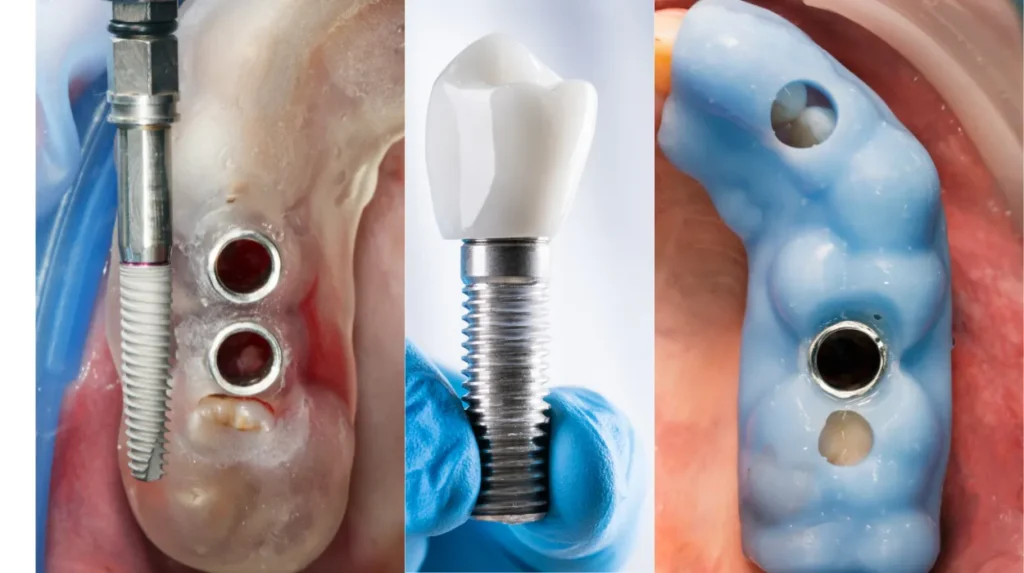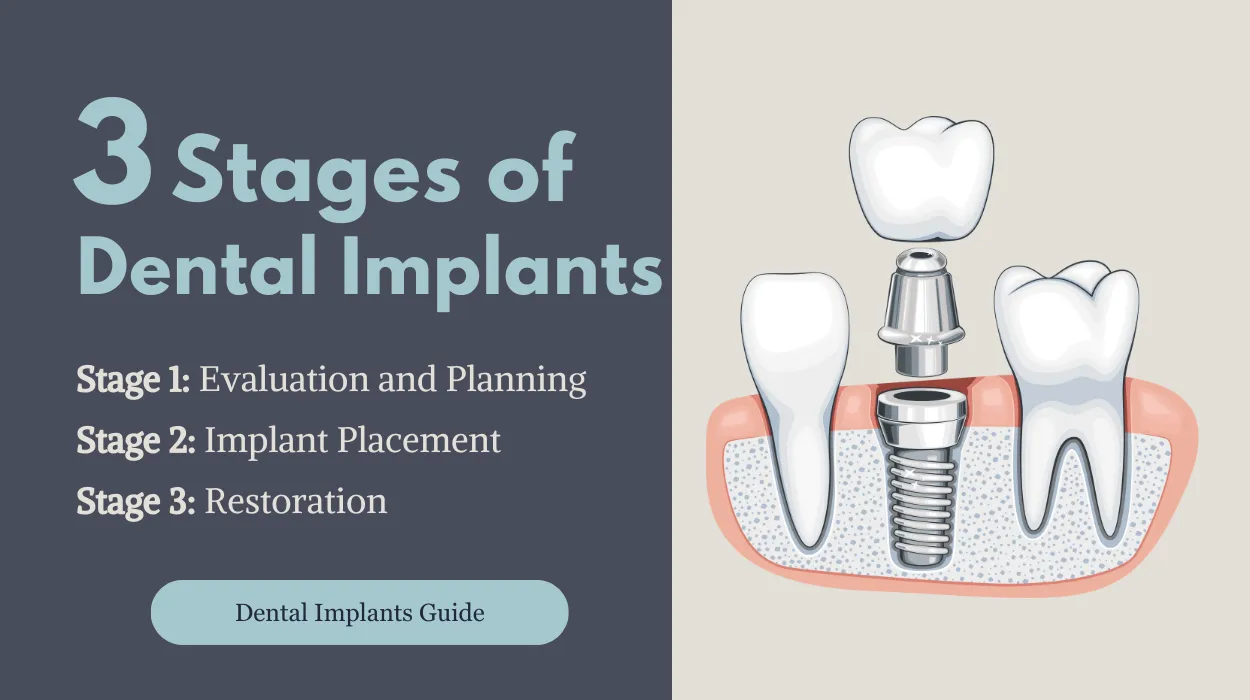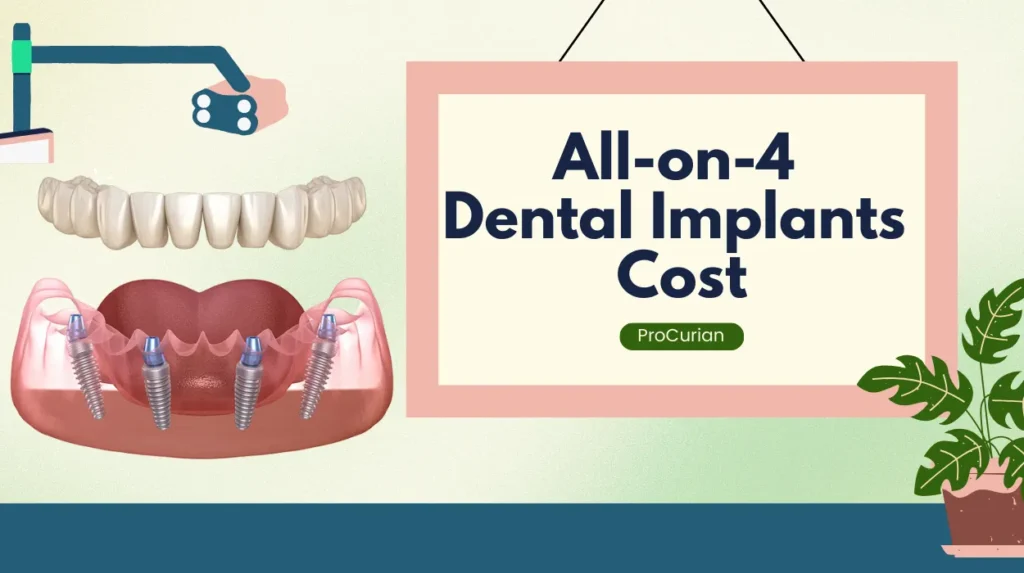
Dental implants are a fantastic way to replace missing teeth, but the process can seem a bit overwhelming at first.
Don’t worry! I’m here to break it down for you in the simplest way possible. In this article, we’ll explore the 3 stages of dental implants, step by step, so you can approach your implant journey with confidence.
Dental implants are made of titanium, a strong and biocompatible material that fuses with the jawbone over time. This creates a solid foundation for a prosthetic tooth, such as a crown, bridge, or denture.
The dental implant process is typically completed in three stages:
- Evaluation and Planning
- Implant Placement
- Restoration
Stage 1: Evaluation and Planning

This initial stage is all about assessing your unique situation and making sure you’re a good candidate for the procedure.
Consultation with a Dentist
Your journey starts with a visit to a qualified dentist or oral surgeon. During this consultation, you’ll discuss your dental history, any underlying medical conditions, and your expectations.
Your dentist will also examine your mouth and take X-rays to get a detailed view of your jawbone and oral health.
Treatment Plan
Based on the evaluation, your dentist will create a personalized treatment plan. This plan will outline the number of implants you need, the type of implant (endosteal or subperiosteal), and the estimated cost.
It’s also the time to discuss your anesthesia options, like local anesthesia or conscious sedation, to ensure you’re comfortable during the procedure.
Preparing Your Mouth
In some cases, you might need preparatory procedures before getting implants. This can include bone grafting to strengthen your jawbone if it’s not dense enough to support the implants. It’s crucial to have a healthy and robust foundation for your new teeth.
Related Article ➦ How To Clean Dental Implants?
Stage 2: Implant Placement

Once your treatment plan is in place, it’s time for the second stage – implant placement. This is where the magic happens, and you’re one step closer to having a complete smile.
Implant Surgery
The day of the surgery arrives, and you might be a little nervous, but don’t worry; your dental team is well-prepared. During the procedure:
- You’ll be numbed with local anesthesia or sedated, depending on your prior agreement.
- Your dentist or oral surgeon will make a small incision in your gum to expose the jawbone.
- The implant, typically a small titanium post, will be carefully placed into your jawbone.
- The incision is then stitched up, and you’ll be given instructions for post-operative care.
Healing and Osseointegration
After the implant is in place, it’s time for your body to work its magic. This healing process is called osseointegration, and it’s when the implant fuses with your jawbone. This can take a few months, and during this time, you’ll need to:
- Follow a soft diet to avoid putting too much pressure on the implant site.
- Maintain good oral hygiene to prevent infection.
- Attend regular follow-up appointments to monitor your progress.
Related Article ➦ How to Heal Faster After Dental Implants?
Stage 3: Restoration

Now comes the exciting part – getting your new teeth! The third and final stage involves attaching the artificial teeth to the implanted posts.
Abutment Placement
Once osseointegration is complete, your dentist will need to expose the implant by reopening your gum. This step is necessary to place the abutment, a small connector post, onto the implant. The abutment serves as the anchor for your prosthetic tooth.
Impressions and Custom-Made Prosthesis
After the abutment is in place, your dentist will take impressions of your mouth to create a custom-made crown, bridge, or denture. This ensures a perfect fit and a natural-looking smile. The color and shape of your new teeth will be matched to your existing ones, so they blend seamlessly.
Final Placement
Once your new teeth are ready, your dentist will securely attach them to the abutments. They’ll make sure everything feels comfortable, fits properly, and looks great. After a few adjustments, you’ll be ready to flaunt your new smile to the world.
Related Article ➦ Pros and Cons of Dental Implants
FAQs
How many stages are there in getting dental implants?
There are three main stages:
Stage 1: Getting ready and planning.
Stage 2: Putting the implant into your jaw.
Stage 3: Making your new tooth and attaching it.
How long does it take to get dental implants?
It can take 5 to 7 months to get dental implants.
What is osseointegration?
It’s when the implant fuses with your jawbone to become stable.
Does implant placement require surgery?
Yes, it’s a surgical procedure, but you won’t feel pain.
Are dental implants noticeable?
No, they look and feel like natural teeth.
Can dental implants break or decay like natural teeth?
No, implants are durable and don’t decay.
Final Thoughts
Congratulations! You’ve made it through the three stages of dental implants. From the initial consultation to the final attachment of your new tooth, this process may 5 to 7 months, but the result is a smile that looks and feels just like your natural teeth.
Remember, everyone’s journey with dental implants is unique, and it’s essential to follow your dentist’s instructions for post-implant care and maintenance. With the right care, your dental implants can last a lifetime, giving you the confidence to flash that radiant smile whenever you please.
If you have any more questions or concerns about dental implants, don’t hesitate to comment down below.









